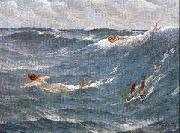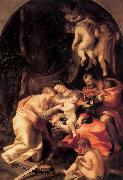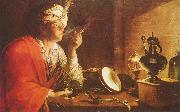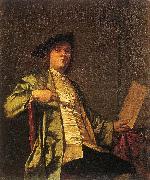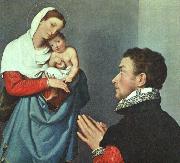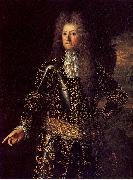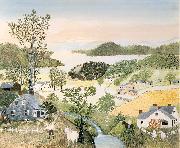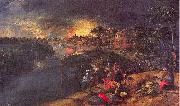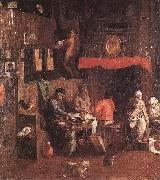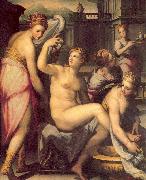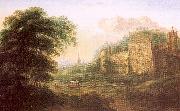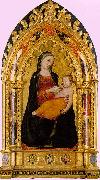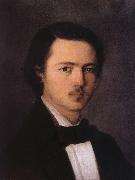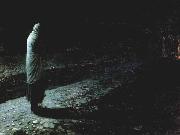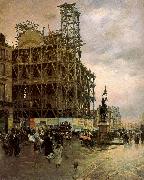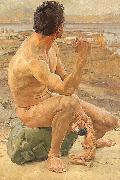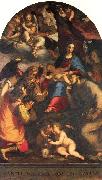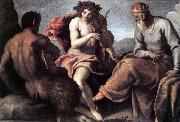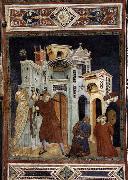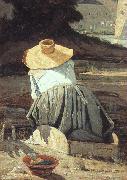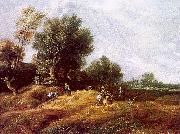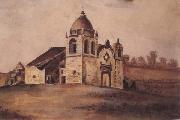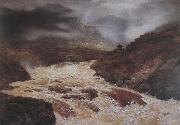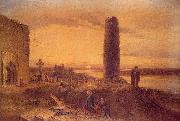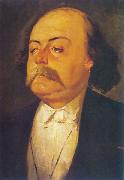|
|
|
|
|
|
|
|
|
|
|
|
|
|
 |
mikhail glinka
|
|
Period: Romantic (1820-1869)
Country: Russia
Born: June 01, 1804 in Novospasskoye, Smolensk, Russia
Died: February 15, 1857 in Berlin, Germany
Genres: Chamber Music, Keyboard Music, Miscellaneous Music, Opera, Orchestral Music, Vocal Music
|
|
|
|
|
|
|
|
|
|
|
|
|
|
|
|
natalia goncharova
|
|
natalia goncharova(1881 to 1962),Russian painter, stage designer, printmaker and illustrator. She was a leading artist of the Russian avant-garde in the early 20th century but became a celebrity in the West through her work for SERGE DIAGHILEV and the BALLETS RUSSES. During the 1920s she played a significant role within the Ecole de Paris and continued to live and work in France until her death.
|
|
|
|
|
|
|
|
|
|
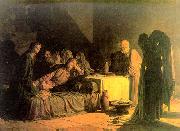 |
Nikolai Ge
|
|
1831 C 13 June [O.S. 1 June] 1894) was a Russian realist painter famous for his works on historical and religious motifs.
Nikolai Ge was born in Voronezh to a Russian noble family of French origin. His grandfather emigrated to Russia in the 18th century. His parents died when he was still a child, so Nikolai was raised by his serf nurse. He graduated from the First Kiev Gymnasium and studied at the physics-mathematics department of Kiev University and Saint Petersburg University.
In 1850 he gave up his career in science and entered the Imperial Academy of Arts in Saint Petersburg. He studied in academy under the historical painter Pyotr Basin until 1857. He graduated from the academy in 1857 with a gold medal for his painting The Witch of Endor Calling Up the Spirit of the Prophet Samuel. According to Ge himself, during that period he was strongly influenced by Karl Brullov.
His gold medal provided him a scholarship for studying abroad . He visited Germany, Switzerland, France and in 1860 settled in Italy. In Rome he met Alexander Andreyevich Ivanov who strongly influenced Ge. In 1861 Ge painted The Last Supper; in 1863 he took the painting with him to Saint Petersburg. Ge found his own interpretation of the classical subject ?? he emphasized the motif of discord among those who had formerly shared the same views. The painting (bought by Tsar Alexander II of Russia) made so strong impression that Ge was made a professor of Imperial Academy of Arts.
In 1864 he returned to Florence where he became a friend of a major Russian pro-Western writer and thinker Alexander Herzen and painted his portrait. The same year he also painted Messengers of the Resurrection and the first version of the Christ on the Mount of Olives. |
|
|
|
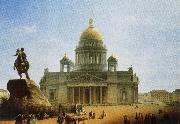 |
nikolay gogol
|
|
With the works of the Russian author Nikolai Gogol (1809-1852) the period of Russian imitation of Western literature ended. He found inspiration in native materials and combined realistic detail with grotesque and otherworldly elements. |
|
|
|
|
|
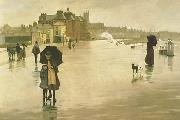 |
Norman Garstin
|
|
(28 August 1847 ?C 22 June 1926) was an Irish artist associated with the Newlyn School of painters.
He was born in Caherconlish, Co. Limerick, Ireland, and was involved in various professions such as journalism and gold mining in South Africa. In 1885 he befriended members of the Newlyn School and settled there a year later, moving to nearby Penzance in 1890.
The Rain it Raineth Every Day 1889His work consisted primarily of small oil panels in the plein air style, something he had picked up from the French Impressionists such as Edouard Manet and Edgar Degas. |
|
|
|
|
|
|
|
|
|
|
|
|
|
|
|
|
|
|
|
|
|
|
|
|
|
|
|
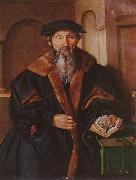 |
PENCZ, Georg
|
|
German Northern Renaissance Painter, ca.1500-1550 |
|
|
|
|
|
|
|
|
|
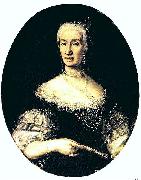 |
Pier Francesco Guala
|
|
(15 September 1698 - 27 February 1757), also known as Pierfrancesco and Pietro Francesco, was an eighteenth-century Italian painter active for the most part in the region of his place of birth, Casale Monferrato.
Guala was the seventh of eight siblings of whom only he and a sister survived infancy. His mother died when he was five and he was brought up by his father, Lorenzo, who himself was a painter and perhaps related to the architect Sebastiano Guala.
Pier Francesco Guala died in Milan on 27 February 1757.
|
|
 |
Pier Leone Ghezzi
|
|
(Rome, 28 June 1674 - Rome, 6 March 1755) was an Italian Rococo painter and caricaturist active in Rome.
Caricature of composer Antonio Vivaldi by Pier Leone GhezziGhezzi was born in Rome. His father, Giuseppe Ghezzi, (1634-1721), also trained Antonio Amorosi, and was a secretary to the Roman Accademia di San Luca. Pier Leone himself joined the Academy in 1705 and he executed a painting, the Allegory of Gratitude, to be donated to the institution, as was customary.
He was the godson of Carlo Maratta. Pier Leone is known for his frescoes in the Villa Falconieri of Frascati.
His pen and gouache caricatures are much freer in emotion than his state portraiture, and often depict named individuals or professions in satirical fashion.
|
|
|
|
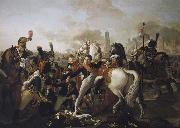 |
Pierre Gautherot
|
|
painted Napoleon Ier, blesse au pied devant Ratisbonne, est soigne par le chirurgien Yvan, 23 avril 1809 |
|
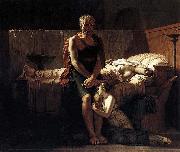 |
Pierre-Narcisse Guerin
|
|
(13 May 1774 - 6 July 1833) was a French painter.
Guerin was born in Paris.
A pupil of Jean-Baptiste Regnault, he carried off one of the three grands prix offered in 1796, in consequence of the competition not having taken place since 1793. In 1799, his painting Marcus Sextus (Louvre) was exhibited at the Salon and excited wild enthusiasm. Part of this was due to the subject - a victim of Sulla's proscription returning to Rome to find his wife dead and his house in mourning - in which an allusion was found to the turmoil of the French Revolution.
Guerin on this occasion was publicly crowned by the president of the Institute, and went to Rome to study under Joseph-Benoît Suvee. In 1800, unable to remain in Rome on account of his health, he went to Naples, where he painted the Grave of Amyntas. In 1802 Guerin produced Phaedra and Hippolytus (Louvre); in 1810, after his return to Paris, he again achieved a great success with Andromache and Pyrrhus (Louvre); and in the same year also exhibited Cephalus and Aurora (Louvre) and Bonaparte and the Rebels of Cairo (Versailles). These paintings suited the popular taste of the First Empire, being highly melodramatic and pompously dignified.
The Restoration brought to Guerin fresh honours; he had received from the first consul in 1803 the cross of the Legion of Honour, and in 1815 Louis XVIII named to the Academie des Beaux-Arts. His style changed to accord with popular taste. In Aeneas Relating to Dido the Disasters of Troy (Louvre), Guerin adopted a more sensuous, picturesque style.
Guerin was commissioned to paint for the Madeleine a scene from the history of St Louis, but his health prevented him from accomplishing what he had begun, and in 1822 he accepted the post of director of the French Academy in Rome, which in 1816 he had refused. On returning to Paris in 1828, Guerin, who had previously been made chevalier of the order of St. Michel, was ennobled. He now attempted to complete Pyrrhus and Priam, a work which he had begun at Rome, but in vain; his health had finally broken down, and in the hope of improvement he returned to Italy with Horace Vernet. Shortly after his arrival at Rome Baron Guerin died, on the 6th of July 1833, and was buried in the church of La Trinite de Monti by the side of Claude Lorrain.
|
|
 |
Pieter de Grebber
|
|
(c. 1600, Haarlem - 1652/3, Haarlem) was a Dutch Golden Age painter.
De Grebber was the oldest son of Frans Pietersz de Grebber (1573 - 1643), a painter and embroiderer in Haarlem, and the brother of the painters Maria and Albert. He learned to paint from his father and from Hendrick Goltzius. He was descended from a Catholic and artistic family and his sister Maria later became the mother-in-law of Gabriel Metsu. He was a friend of the priest and musicologist Jan Albertszoon Ban, and had a poem set to music by the Haarlem composer Cornelis Padbrue. In 1632 he became a member of the Haarlem Guild of St. Luke, but he had already been active as a painter for 10 years. His pupils were Gerbrand Ban, Nicolaes Pietersz Berchem, Egbert van Heemskerck, and Dirck Helmbreeker.
In 1618, father and son went to Antwerp and negotiated with Peter Paul Rubens over the sale of his painting "Daniel in the lions pit". It was then handed - via the English ambassador in the Republic, Sir Dudley Carleton - to king Charles I. Pieter got important commissions not only in Haarlem, but also from the stadholder Frederik Hendrik. As such, he worked on the decoration of the Huis Honselaarsdijk in Naaldwijk and at the Paleis Noordeinde in Huis ten Bosch in the Hague. He painted altar pieces for churches in Flanders and hidden Catholic churches in the Republic. He may also have worked for Danish clients.
Pieter remained single and lived from 1634 until his death at the Haarlem Beguinage.
|
|
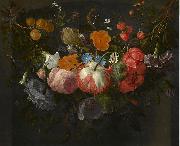 |
Pieter Gallis
|
|
(1633, Enkhuizen - 1697, Hoorn), was a Dutch Golden Age painter.
According to Houbraken, he painted as a hobby, since he earned his living as the director of the local pawn shop (Bank van Lening).He specialized in landscapes, flowers, fruit and other forms of still life. He was a very friendly man, especially to artists and art collectors.
He was active in Enkhuizen (and perhaps Amsterdam), in Purmerend from 1679-1683, and in Hoorn from 1683 until his death. |
|
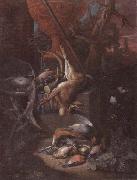 |
Pieter Gijsels
|
|
Flemish painter (b. 1621, Antwerpen, d. 1690, Antwerpen |
|
|







